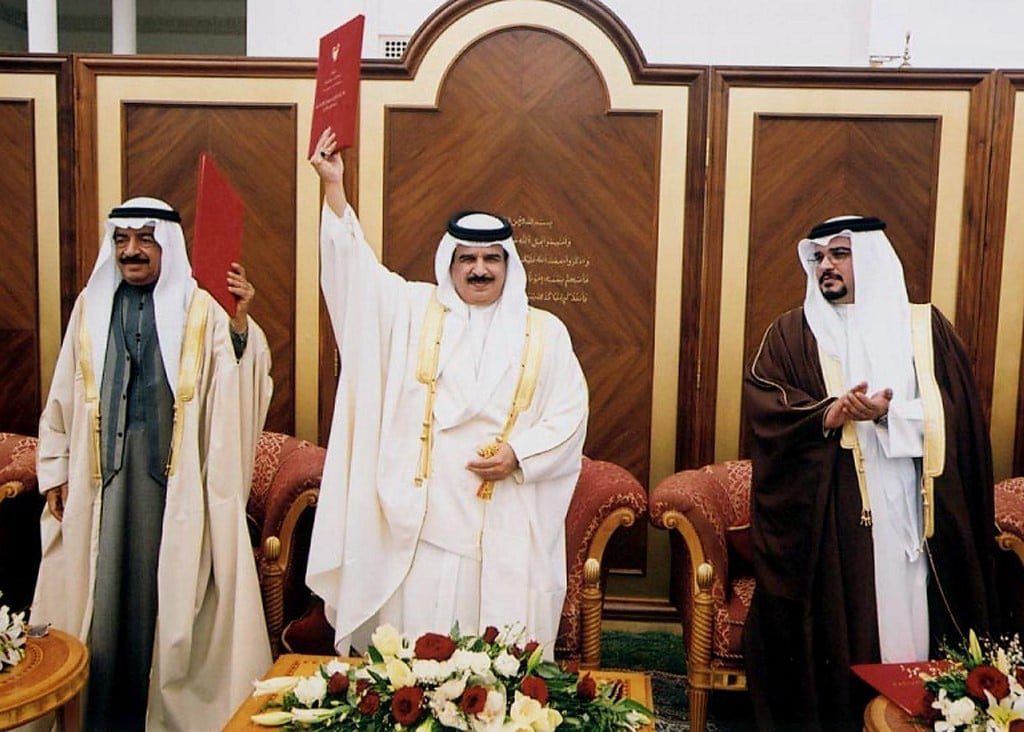
Introduction
When, on 6 March 1999, Emir Isa bin Salman Al Khalifa died of a heart attack after a reign of more than 37 years, he left behind a country in turmoil. The long-standing animosity between the disgruntled Shiites of the towns and the mostly Sunni upper classes controlling both the business district of Manama and the government had come to a head during the late 1990s. From 1994 on, Shiite demonstrators frequently clashed with trigger-happy security forces.
The rioters demanded a restoration of the elected National Assembly that had been in place from 1973 until 1975 (when the Constitution of 1973 was suspended) and a return to constitutional rule. The government always pointed to ‘foreign’ (i.e., Iranian) influences, but the internal, socio-economic roots of the unrest can be gathered clearly from the increasing arson attacks directed at migrant Asian workers. The economy was in a precarious situation, and unemployed Shiites naturally detested the importation of grossly underpaid labourers from less developed Asian countries.
The regular street riots and government crackdowns attracted the attention of Western journalists and human rights organizations. Bahrain’s bad press in turn led to a reduction in foreign investment, which worsened the social-economic malaise of the 1990s. The autocratic rule of the Al Khalifa seemed to be in jeopardy.
Some members of the ruling family, including Emir Isa and his son Hamad, are said to have believed that political concessions were needed to stabilize the country and secure Al Khalifa prominence, but the real power in Bahrain did not lie with the Emir and his presumably reform-minded entourage. Emir Isa had merely reigned, while his brother Khalifa bin Salman, the long-serving Prime Minister, ruled.
It was Khalifa who controlled the security forces and had placed loyal supporters in key ministerial positions. Khalifa preferred the old and tested iron fist over the granting of political concessions, however limited, as a solution to the country’s problems. So, when Hamad bin Isa succeeded his father in 1999, he had to confront not only the overwhelming social and economic problems of Bahrain but also his powerful uncle.
Bahraini Defence Force
In his struggle with his uncle’s faction Hamad bin Isa could count on the support of the army, the Bahraini Defence Force (BDF), which he had personally created in the 1970s and which remained under his control. The army’s lingering support was crucial for Hamad, a fact he emphasized, shortly after taking power in 1999, by forwarding his heir and oldest son Salman as the new commander-in-chief of the BDF.
Hamad, however, needed a broader power base from which to confront Khalifa, so he turned to the reform-minded group that had surrounded his late father. While the new Emir had shown only a lackluster and unconvincing disposition towards political liberalization before 1999 – his own BDF troops had actively taken part in the repression, and he had relied on Pakistani conscripts rather than on local Shiite youth to fill the lower ranks of his army – Hamad suddenly and surprisingly announced an ambitious programme of political reforms in his National Day address of December 1999.
'National dialogue'
In an unprecedented step, Hamad invited intellectuals to the palace for consultation and promised a ‘national dialogue’ on the Constitution. In November 2000 he appointed a committee to prepare a National Charter on ‘the general framework of the future course of the state’. Its draft was presented to the public the next month. The charter was ambitious by local standards – it spoke of separate executive, judicial, and legislative branches of government, of the people as the source of all powers, of political rights for women, and of freedom of expression. It was, however, ominously vague.
Moreover, the charter named the Emir as ‘head of the three branches’, and it spoke of a bicameral Parliament with a ‘second council’ consisting of appointed ‘people of competence and experience’. Despite some scepticism, the government convinced the opposition of its liberal intentions by releasing all remaining political prisoners and appearing to acquiesce in their demand that the elected body should have legislative authority, as had been the case from 1973 to 1975.

